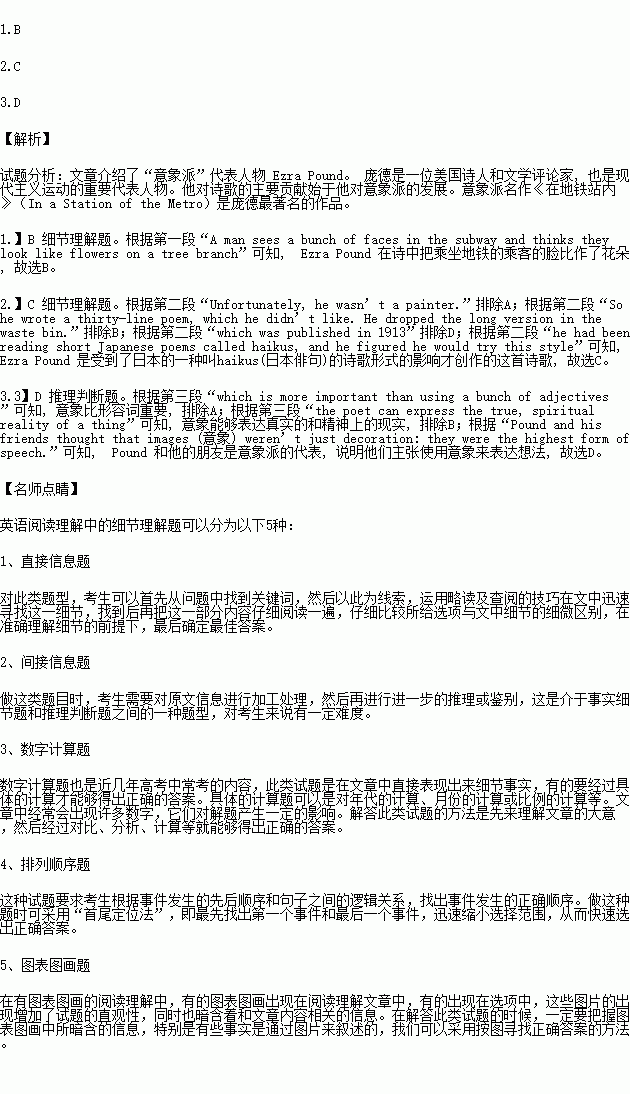题目内容
In a Station of the Metro
The apparition of these faces in the crowd;
Petals on a wet, black bough.
This is the only Ezra Pound poem that many people will read in their lives. Why? One obvious reason is that it’s just two lines long. The poem, which can be understood as “A man sees a bunch of faces in the subway and thinks they look like flowers on a tree branch,” is an exercise in shortness. Pound wrote it after having a spiritual experience in a Paris metro (subway) station.
In 1916, the US poet originally thought he could best describe his vision in a painting. Unfortunately, he wasn’t a painter. So he wrote a thirty-line poem, which he didn’t like. He dropped the long version in the waste bin. Six months later, he wrote a shorter poem, but didn’t like that one either. Finally, a full year after the experience, he had been reading short Japanese poems called haikus, and he figured he would try this style. The result, which was published in 1913, is one of the most famous and influential works in modern poetry.
This poem is one of the monuments (纪念物) of the 20th-century artistic movement known as “Imagism”. Basically, Pound and his friends thought that images (意象) weren’t just decoration: they were the highest form of speech. By finding the right image, the poet can express the true, spiritual reality of a thing, which is more important than using a bunch of adjectives to describe its physical appearance. Thus, “In a Station of the Metro” is a poem that consists of one image expressed with absolute (绝对的) exactness and nothing else.
To the imagists, the best way to describe an experience is not to use more and more words; the best way is to find exactly the right words. Have you ever told a beloved one that “words can’t express” how much you love them? Well, Pound would say that you’re just being lazy. In his view, words can express anything, even if it takes an entire year to find the right ones.
1.In the short poem, Ezra Pound .
A. tells us one of his painful experiences
B. compares the passengers’ faces to flowers
C. describes a man walking among the crowd
D. shows a wet, black tree branch in a metro station
2.According to the text, “In a Station of the Metro” was .
A. based on one of Pound’s paintings
B. first discovered in a waste bin
C. influenced by haikus
D. completed in 1916
3.Pound and his friends .
A. stressed the importance of using adjectives
B. were good at describing abstract images
C. decorated their poems with pictures
D. used images to express their ideas

